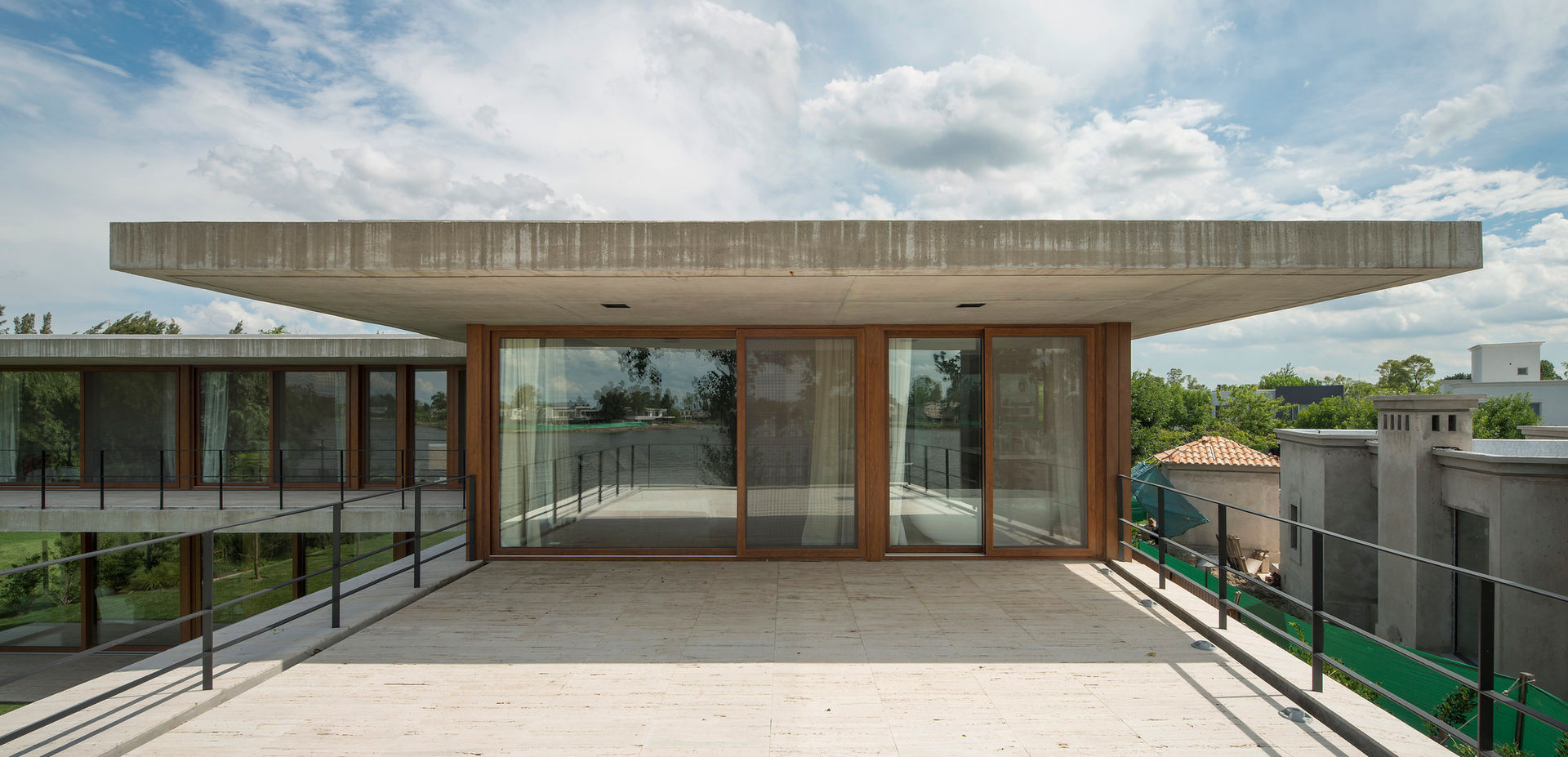Project: Santander House
Location: Tigre, Buenos Aires, Argentina
Size: 534 m2
Status: Built
Partners: Juan Ignacio Ramos & Ignacio Ramos
This house was built in El Encuentro, a gated community located in Tigre, a suburb in the north of Buenos Aires. The clients, a couple with two children, acquired a lot situated in front of a lake. The front and the rear property lines are curved and the sides are not parallel, narrowing the land towards the back. The floor plan adapts its shape to the outline of the parcel.
Considering the needs of the family and the size of the lot, the house was developed in separate levels. The L-shape ground floor has two arms. One accommodates the living-dining room, the TV room and an office. The other one contains the more casual part of the program: the kitchen, the playroom and a covered patio, connected to the swimming pool. A similar strategy was adopted on the second floor, placing the master suite on one of the arms, away from the rest of the bedrooms.
On the ground floor, the space flows from one room to the other. Large pocket doors were installed to provide flexibility in the use. The connection between the inside and the outside is strong throughout the house. All the main rooms were designed with the views of the garden and the lake.
A curved concrete wall was placed in front of the house to enclose the space, creating a courtyard with a reflecting pond. The purpose was to provide privacy, natural light and green views to the living-dining room and the office while framing the main access. The staircase and the study receive light through the openings that overlook the planted roof of the carport and the entrance porch.
The structure was built with reinforced concrete. On the exterior, the walls were finished with exposed concrete and wood siding, and the floors, with travertine stone. On the interior, the walls were finished with plaster and concrete, and the floors, with hardwood boards.
From the street, the building is perceived as a solid and heavy pedestal holding a lighter structure. From the back, two horizontal concrete planes define the morphology of the design. Giving the odd impression that the weight of the slabs is supported by the glass openings, they seem to be floating.


















